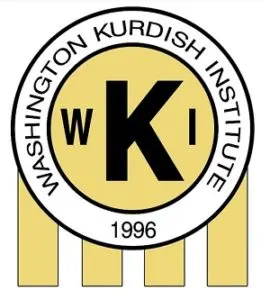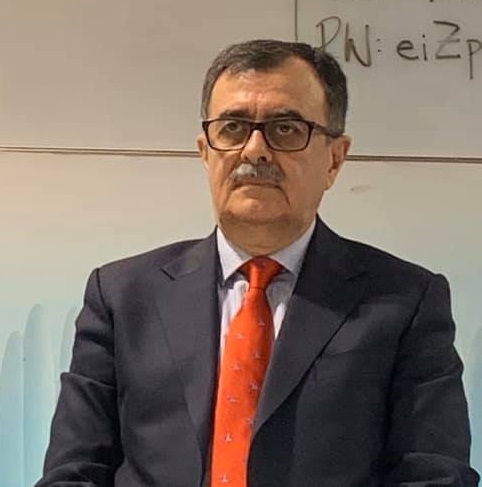Thank you and thanks the Kurdish institute in Washington. The all the audience for having us here. The Kurdish issue is a long and sad history. I don’t want to go into details of that because I’m told that what’s more interesting these days is the recent protests in Iran. But in any protest in Iran, there is always a Kurdish dimension to it. In fact Kurds never supported the Iranian regime, the Islamic Republic of Iran. In fact, the Kurds were the only part of Iran in April, 1979, who boycotted the referendum of establishing the Islamic Republic of Iran. All parties and personalities did so. In July and August of 1979, Ayatollah Khomeini ordered an unprovoked onslaught against the Kurdish people. The Kurds had no choice but resist, they did so. It took 10 years for the Uranian regime to take back Kurdistan by brutal military measures. So we’ve been at the forefront of fighting this regime, fighting for democracy in Iran, as well as Kurdish rights. But this time, the Kurds are not alone. The whole population of Iran, are in a kind of protest movement, both against economic as well as political and cultural policies of the Islamic Republic of Iran. This movement, the recent Iran protests started in mid November as a protest against fuel price hike. But it very quickly developed into a full anti regime movement. More than a hundred cities in Iran joined the protests. The Iranian minister of internal affairs, said 29 out of the 31 provinces of Iran joined the movement. So it was the most widespread movement we’ve had against the regime in 41 years. And even according to the authorities, this has been the most serious challenge the regime has encountered in four decades.
In response to these protests, initially, the Iranian Majlis: the Iranian parliament, put forward a motion for a full reversal of the price increase. But it was Ayatollah Khamenei himself, who blocked it and overcame the conciliatory mood of the, some elements in the government and united everybody behind him and ordered, the brutal repression of the peaceful protests. Unlike the green movement in 2009 when the movement was confined to Tehran this capital of Iran, and socially, it was confined to the educated middle class. This time it was the poor people, they called them “Mostazafin” [the downtrodden] in Iran. It was exactly the base of the regime who took the streets and protested against the system. Khamenei, according to his office, officials said that he is taking full responsibility for the decision and for the repression. Of course, they don’t call it repression, they call it a world war. Deputy commander of Iran’s revolutionary guards (IRGC), openly said it was a world war and we won the war. Khamenei himself referred to it as a war and he said: “we won the war. We made the enemy to retreat.” They carried out the many, many atrocities in Iran. In many cities in Kurdistan, like Javanrud, Kermanshah, Kamyaran, Sanandaj, Marivan, Saqqez, and Bokan people joined the movement. In fact, the movement overcame ethnic boundaries all over Iran. That’s why I say this time Kurds were not alone.
The main atrocities took place in Kurdish areas, especially in Javanrud, Kermanshah, and Marivan. Also in Mahshahr the southern province of Khuzestan, mainly Arab populated, where the authorities opened fire with heavy machine guns, against people who, hid themselves in the marshes and killed dozens of them. Also in Shiraz where people took many quarters of the city and the authorities took them back with brutal force. Also in the western shanty towns of Tehran, where the authorities, the Islamic Republic of Iran always considered them their main base. It was them revolted against the system. That’s why I think like many, many analysts and political activists in Iran, that this time it was different. Unlike the green movement, they didn’t have any umbilical cord to the reformers in Iran or to any faction in the government. Because of the role that Ayatollah Khamenei, he played, this made Khamenei, the main target of the protesters of the people in the streets. They shot people at close range and mostly in the back. There is no accurate account of the casualties and the wounded, but it is estimated to be hundreds, at least around 50 people were killed in Kurdish cities, probably more. But we have the names and details of that number with us.
The important thing this time is that there are clear signs of cracks in the government, in the system, signs of panic among them and signs of defection that’s why think it’s very important. What we want the United States and the international community is not to intervene militarily, but support the people of Iran in the fight for democracy and in the fight against this brutal regime. The Islamic Republic of Iran must be politically isolated. It’s time that the United States and other countries, members of the security council, take the matter to the security council. The atrocities must be condemned internationally. As always, Kurds have been at the forefront of this fight and they also have to be protected by the international community. Thank you very much for your time.

